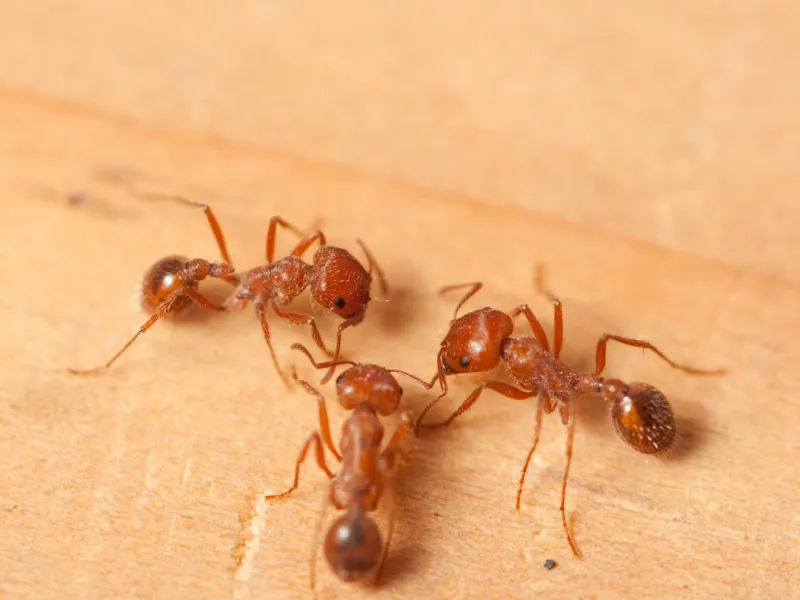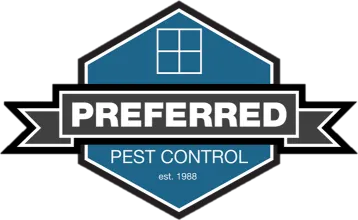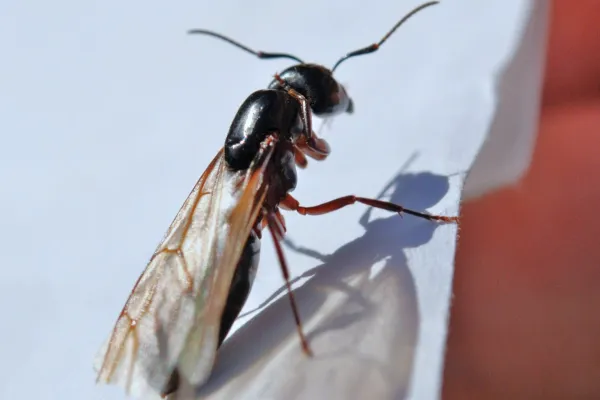Fire Ants in Savannah

Fire Ants in Savannah, GA: What You Need to Know
If you've ever experienced a sharp, burning pain after stepping outside barefoot in Savannah, chances are you've met a fire ant. These aggressive invaders are more than just a backyard nuisance—they're a serious threat to people, pets, and property. At Preferred Pest Control, we understand the dangers fire ants pose to Savannah homes and businesses. In this blog, we'll walk you through everything you need to know about fire ants—what they look like, how they behave, and how we can help protect your space.
What Do Fire Ants Look Like?
Most fire ants encountered in the United States are red imported fire ants (Solenopsis invicta). Workers range from 1/16 to 1/5 inch long and come in multiple sizes within the same colony. All have a copper-red head and thorax paired with a darker brown-black abdomen—a smooth, shiny section known as the gaster, which hides a potent stinger in adult females.
This polymorphic size variation can make spotting a fire ant colony tricky, as the workers may appear disorganized at first glance. But their coordinated attacks and painful stings tell a different story.
Where Did Fire Ants Come From?
Fire ants are not native to the U.S. They originated in the floodplains of central South America, including parts of Brazil, Paraguay, and Argentina. Their journey north began in the 1930s, when they likely arrived in Mobile, Alabama, through contaminated ship ballast soil. Since then, they've spread rapidly across the Southeastern United States, covering over 260 million acres, including in Savannah, Georgia.
Their rapid expansion is partly due to their adaptability and aggressive nature, allowing them to dominate native ant species and thrive in disturbed environments like lawns, pastures, and construction zones.
The Role of Fire Ants in Nature
In their native environment, fire ants are busy little omnivores. They feed on insects, dead animals, and sugary substances like honeydew, and they even help disperse plant seeds. Their tunneling activity can improve soil aeration and nutrient cycling, functioning as tiny ecological engineers.
However, outside of South America, fire ants behave like an invasive pest. In Georgia, they:
Displace native ant species
Destroy ground-nesting wildlife
Damage crops and sensitive electrical equipment
In short, what makes fire ants valuable in their home ecosystem becomes a significant problem in ours.
Identifying a Fire Ant Mound
One of the most visible signs of a fire ant infestation is the mound. These dome-shaped structures are made from loose, fluffy soil, often without any visible opening at the top. That's because fire ants travel through underground tunnels, which helps shield their colony from predators and the elements.
Fire ant mounds can grow to 12 to 18 inches tall and often appear after heavy rainfall, when the soil is easier to manipulate. If you see these mounds around your yard or business, it's time to call in professional pest control.
Why Fire Ant Stings Hurt So Much
Fire ants don't just bite—they bite and sting. First, they latch on with their mandibles, then pivot to sting multiple times, injecting a venom that causes intense burning pain, swelling, and a characteristic white pustule at the sting site.
Fire ant venom is incredibly effective for:
Defending the colony from predators
Subduing prey that the ants will later consume
Sanitizing their brood chambers with antimicrobial compounds
How Fire Ants Spread in Savannah
Fire ants are relentless invaders, and Savannah's warm, humid climate offers ideal conditions for their colonies to thrive. But how exactly do they spread?
Natural Expansion Through Budding - In established colonies, a single queen can lay up to 1,500 eggs per day. Once the colony becomes too large, a new queen will take a group of workers and form a new nest nearby. This is called budding, allowing fire ants to rapidly expand across neighborhoods, golf courses, farmlands, and parks.
Floodwaters Accelerate Spread - After heavy rains or flooding, a common event in coastal Georgia, fire ants form floating rafts using their bodies to survive. These rafts can drift for miles before making landfall and establishing a new colony. It's one reason why Savannah sees a spike in mound activity after storms.
Human Activity Helps Too - Fire ants also hitch rides in soil, sod, potted plants, hay bales, and construction materials. Without knowing it, residents or businesses can unknowingly transport them to new locations, turning isolated infestations into widespread problems.
Why DIY Fire Ant Control Often Fails
We get it—when you see a mound in your yard, your first instinct is to run to the nearest home improvement store and grab some ant killer. But the truth is, most DIY fire ant treatments just don't cut it. For starters, they often only deal with the surface of the problem. You might kill a few visible ants, but the real threat is underground, where the queen lays hundreds of eggs daily. If she survives, the colony keeps going.
Even worse, disturbing the mound with the wrong treatment can cause the ants to panic and split into multiple colonies. Instead of solving the problem, you've just made it worse. Not only that, but some over-the-counter solutions can also be dangerous. Misapplied chemicals can harm your pets, kids, or even pollinators like bees. And during rainy seasons, those chemicals can run off into the soil or waterways.
The biggest issue? DIY fixes offer short-term relief at best. Fire ants are tough, and without a strategic, long-term plan, they'll keep coming back—and bringing their friends with them.
Why Choose Preferred Pest Control for Fire Ant Removal?
When it comes to fire ants, you need more than a quick fix. You need a team that knows how to get rid of them—and keep them gone. That's where we come in.
Preferred Pest Control is proud to be a locally owned and operated business in Savannah. We understand the unique challenges our community faces regarding pests, especially aggressive ones like fire ants.
We use a proven combination of advanced bait systems, mound treatments, and preventative barriers to target the entire colony—including the queen. Our solutions don't just reduce fire ant numbers; they eliminate the source.
Safety is also a top priority. Our fire ant treatments are safe for pets and children when applied correctly and are approved for residential and commercial properties alike. You'll get peace of mind without sacrificing effectiveness.
Best of all? We stand by our work. Our fire ant control services have guaranteed follow-ups and ongoing maintenance options to ensure the problem stays gone. And if you're not sure whether what you're seeing are fire ants or something else, we offer free inspections and honest advice—no pressure, just help.



